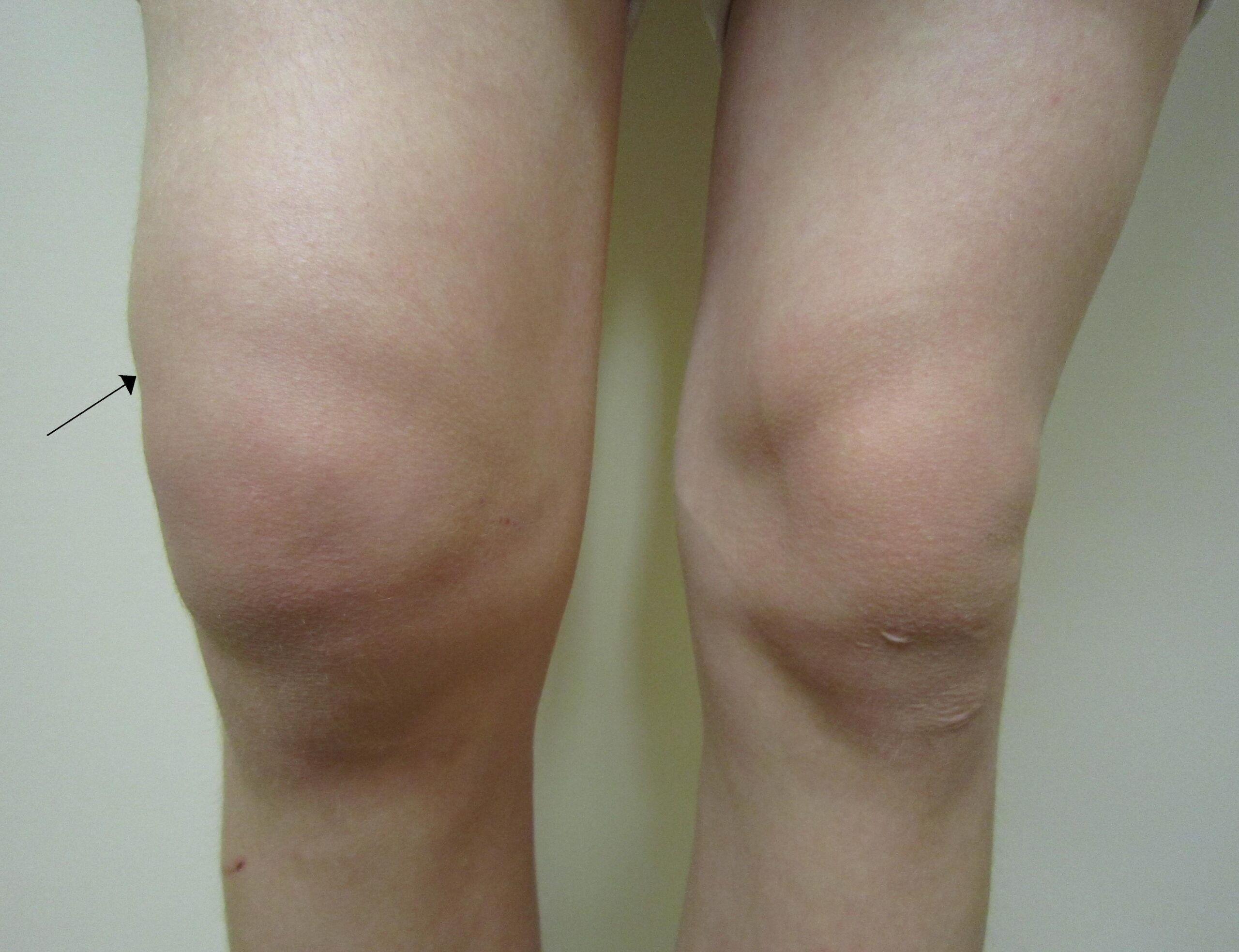What are the symptoms of a swollen knee?
A swollen knee, also known as knee effusion, can present with a variety of symptoms, including:
- Visible Swelling: The knee appears larger than normal, with puffiness or fullness around the joint, particularly noticeable around the kneecap.
- Stiffness: Movement of the knee may be restricted, making it difficult to fully bend or straighten the leg.
- Knee Pain: The knee may be tender, with varying levels of pain that can range from a mild ache to severe discomfort, especially when putting weight on it or moving it.
- Warmth and Redness: The skin over the knee may feel warm to the touch, and in some cases, it may appear red, indicating inflammation or infection.
- Limited Range of Motion: The swelling can interfere with normal knee function, making it difficult to perform everyday activities like walking, climbing stairs, or sitting down.
- Instability: The knee may feel weak, unstable, or prone to giving out when trying to stand or walk.
- Fluid Buildup Sensation: Some people may notice a sensation of fluid inside the knee, especially when pressing on the joint.
The specific symptoms and severity can vary depending on the underlying cause of the swelling, such as injury, arthritis, or infection.
What are the causes of a swollen knee?
A swollen knee can result from various conditions, injuries, or underlying medical issues. Common causes include:
- Injury or Trauma: Damage to the knee from a fall, direct impact, or twisting injury can cause swelling. Common injuries include ligament tears (like ACL or MCL tears), meniscus tears, fractures, and patellar dislocations.
- Osteoarthritis: Wear-and-tear arthritis is a leading cause of knee swelling, especially in older adults. The degeneration of cartilage leads to inflammation and fluid buildup in the joint.
- Rheumatoid Arthritis: An autoimmune condition that causes chronic inflammation in the joints, rheumatoid arthritis can result in swollen, painful knees.
- Gout: A type of inflammatory arthritis caused by the buildup of uric acid crystals in the joint, gout can cause sudden and severe knee swelling.
- Infection (Septic Arthritis): A bacterial, viral, or fungal infection in the knee joint can lead to rapid swelling, pain, and redness. This condition requires immediate medical attention.
- Bursitis: Inflammation of the bursae (small fluid-filled sacs that cushion the knee joint) can lead to swelling, especially in the front of the knee. This is often caused by overuse, pressure, or trauma.
- Tendonitis: Inflammation of the tendons around the knee, often due to repetitive strain or overuse, can cause swelling and pain.
- Pseudogout: Similar to gout, but caused by calcium pyrophosphate crystals, pseudogout can lead to sudden swelling and stiffness in the knee.
- Baker’s Cyst: A fluid-filled sac that forms behind the knee, often as a result of other knee conditions like arthritis or a meniscus tear, can cause swelling.
- Hemarthrosis: Bleeding into the knee joint, often due to injury or a bleeding disorder like hemophilia, can cause significant swelling.
- Repetitive Stress or Overuse: Activities that put repeated strain on the knee, like running or jumping, can lead to swelling due to inflammation of the tissues.
- Tumors or Cysts: Although rare, tumors or cysts within or around the knee joint can lead to swelling.
Identifying the exact cause of a swollen knee is essential for appropriate treatment. If knee swelling persists or is accompanied by severe pain, redness, or a fever, it’s important to seek medical evaluation.
What is the treatment for a swollen knee?
Treatment for a swollen knee depends on the underlying cause but generally includes a combination of home care, medications, and medical interventions. Common approaches include:
- Rest and Activity Modification: Reducing activities that put stress on the knee, like prolonged standing, walking, or high-impact exercises, helps alleviate swelling. Resting the knee is essential for recovery, especially after an injury.
- Ice Therapy: Applying ice packs to the knee for 15-20 minutes several times a day can reduce swelling and numb pain. Be sure to wrap the ice pack in a cloth to avoid direct contact with the skin.
- Compression: Wearing a knee brace or using an elastic bandage can help minimize swelling by compressing the joint. Ensure the bandage is snug but not so tight that it restricts blood flow.
- Elevation: Keeping the knee elevated above heart level, especially when resting, can help reduce fluid buildup by encouraging proper drainage.
- Over-the-Counter Pain Relievers: Nonsteroidal anti-inflammatory drugs (NSAIDs) like ibuprofen or naproxen can reduce both pain and inflammation. Acetaminophen can also be used for pain relief.
- Physical Therapy: For ongoing knee issues, a physical therapist can provide exercises and stretches that strengthen the muscles around the knee and improve flexibility, reducing stress on the joint.
- Draining Excess Fluid (Aspiration): In cases of significant swelling, a doctor may perform joint aspiration to remove excess fluid from the knee, which can quickly reduce swelling and alleviate pain.
- Corticosteroid Injections: If the swelling is caused by inflammation due to conditions like arthritis, a corticosteroid injection into the joint may be administered to reduce swelling and pain.
- Antibiotics: If an infection is causing the knee swelling (like septic arthritis), antibiotics are necessary to treat the infection. This treatment is usually urgent.
- Surgery: For more serious cases involving structural damage (like a torn ligament or meniscus), surgical intervention may be required. This could involve arthroscopic surgery or more extensive procedures, depending on the issue.
- Weight Management: For chronic knee problems, maintaining a healthy weight can reduce strain on the knee joint and help prevent further swelling.
- Treatment of Underlying Conditions: Addressing the root cause—like managing gout, rheumatoid arthritis, or other conditions—can prevent recurrent swelling.
It’s essential to consult a healthcare provider for a proper diagnosis and treatment plan if the swelling persists, is accompanied by significant pain, or is related to an injury.

Leave a Reply
You must be logged in to post a comment.